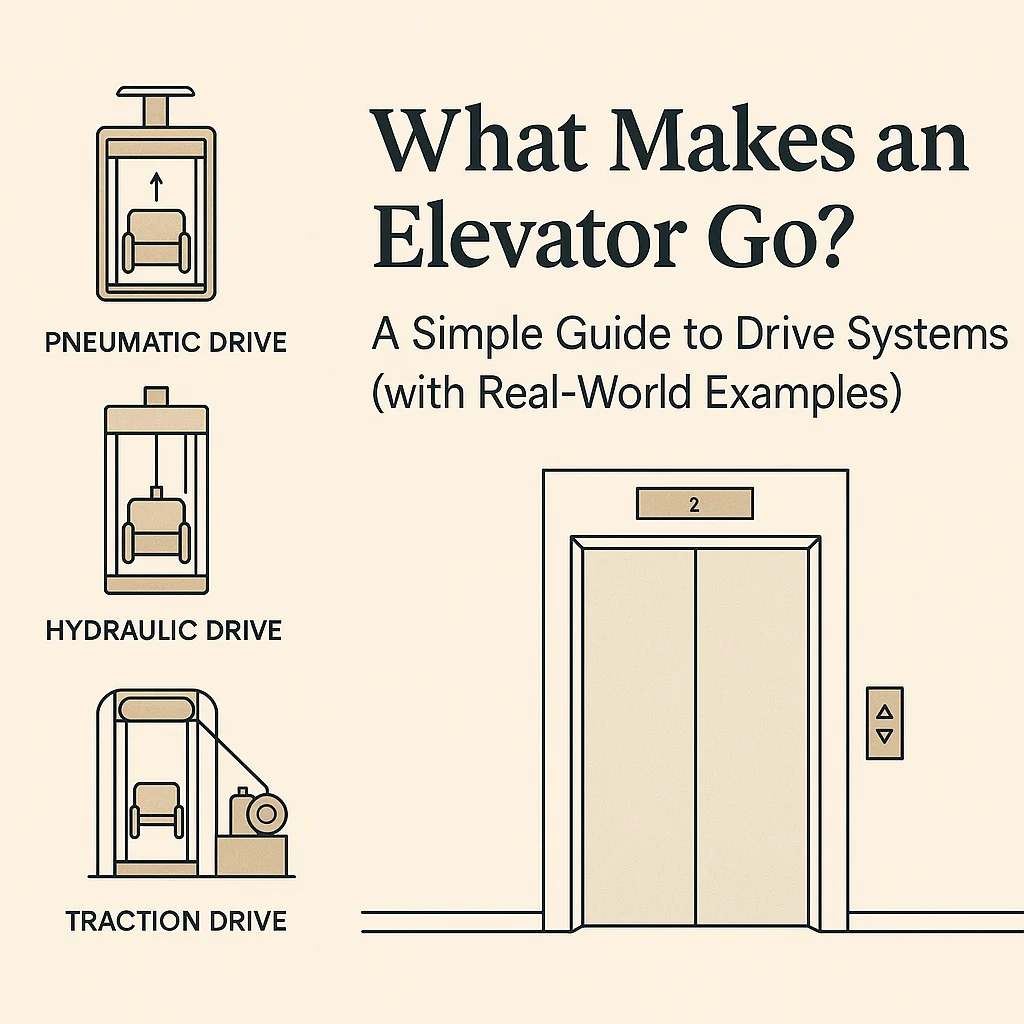What Makes an Elevator Go? A Simple Guide to Drive Systems
October 8, 2025

When most people think about elevators, they picture pressing a series of buttons and going up or down—simple, right? But behind that smooth ride is something quietly working hard: the drive system.
It’s the heart of every elevator—the part that powers the lift, controls its motion, and ensures it starts, stops, and glides safely between floors.
If you’re planning to add a residential elevator or home lift, understanding how these drive systems work can help you choose the best fit for your home, your comfort, and your future needs.
Let’s break it down—no engineering degree required.
1. What’s a Drive System, Anyway?
Think of it like a car’s engine. The drive system is what makes your elevator move.
Different systems use different methods—some rely on air, some on fluid pressure, and others on counterweights and cables.
The type of drive determines how the elevator feels, how much space it needs, and how quietly it runs.
2. The Three Main Types of Residential Elevator Drives
Pneumatic (Vacuum) Drive
This modern system uses air pressure to move the cab. It’s sleek, energy-efficient, and doesn’t require cables or oil.
Pros: Quiet, compact, eco-friendly, great for retrofits.
Cons: Slightly slower speed; small airflow sound.
Hydraulic Drive
Hydraulic systems use fluid pressure to raise and lower the elevator. They’re known for a soft, controlled ride and are common in both residential and commercial settings.
Pros: Smooth motion, proven reliability.
Cons: May require a small machine space or pit, and fluid maintenance over time.
Traction Drive
This type uses steel cables and counterweights—the same technology found in high-rise elevators. It’s efficient and precise, but usually needs more headroom and installation space.
Pros: Excellent for multi-stop lifts and custom builds.
Cons: More complex installation; requires overhead clearance.
3. Why the Drive System Matters
While it’s easy to focus on aesthetics and finishes, the drive system is what determines:
- How smoothly your elevator moves
- How much noise it makes
- Where it can fit in your home
- How much energy it uses
- How often it needs maintenance
Simply put: the drive system defines your day-to-day experience. A smooth, quiet system means peace of mind—and a lift you’ll actually enjoy using.
4. Choosing the Right Drive for Your Home
When deciding on a lift, consider:
- Your home layout (retrofit or new build)
- How many stops or levels you need
- Your mobility needs now and in the future
- Whether you prefer low maintenance or higher customization
Working with a certified installer or manufacturer will help you find the right balance between comfort, design, and budget.
Pollock’s models, for instance, highlight how technology can blend function, form, and simplicity—proof that not all elevators are created equal.
5. The Bottom Line
Understanding how an elevator works doesn’t have to be complicated. Whether it runs on air, hydraulics, or traction, the goal is the same: safe, reliable movement that makes home life easier.
And as technology continues to advance, homeowners have more options than ever for quiet, compact, and energy-efficient elevators—systems that make aging in place not just possible, but pleasant.
Ready to Learn More?
Explore trusted home elevator manufacturers, compare models, and talk to a certified accessibility specialist to find your ideal lift. Check out our Elevator Buyer’s Guide or visit our Contact page to connect with a licensed dealer.
Interested in Becoming a Distributor?
If you are looking to expand your product offerings or trying to reach a new market, then the Pollock Residential Elevator could be perfect for you. Reach out to our team to learn more.


